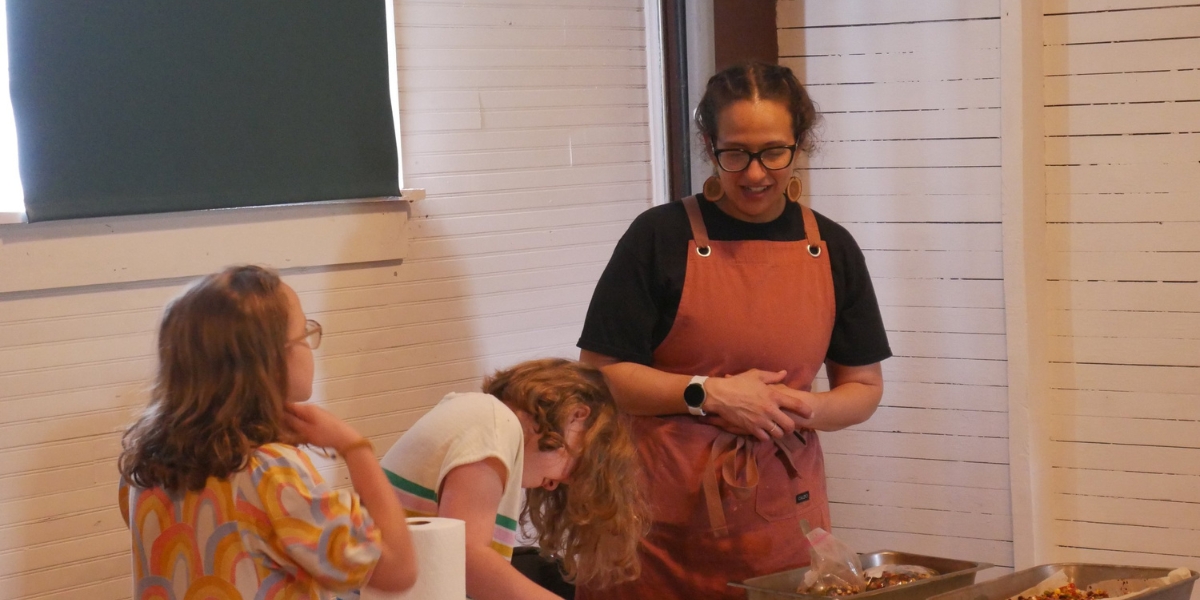By Larry Jent, Appalachian Forest National Heritage Area
The Appalachian Forest National Heritage Area (AFNHA) is celebrating America 250 with Indigenous Appalachia events, recognizing Native peoples who have contributed to Appalachian culture. The unique customs, traditions, and heritage of this region have roots in European, African, and Native American ways of life. Together, they form a stream that is living, vibrant, and constantly evolving.
One way to understand Native contributions to this region and the world beyond, is in the kitchen. More than 60 percent of the world’s table fare was introduced by Native American farmers.
The best-known contribution is corn or maize. It is grown on every continent except Antarctica and is cultivated in over 165 countries. It is the most produced cereal in the world, with annual production of more than 1 billion tons. But here’s the thing: there is no such thing as wild maize. About 10,000 years ago—at the dawn of agriculture—Native farmers began selectively breeding maize by crossing teosinte (a wild grain) with prairie grasses. Today, corn is on our tables, in our gas tanks, sweetening our foods, and creating bio-degradable plastics.
This accomplishment alone would make ancient Native agronomists among the world’s greatest. But there is much more.
Nightshade is a deadly poisonous plant. But through selective breeding, ancient Native agriculturalists created a dizzying array of delicious products. Tomatoes, potatoes, peppers, eggplants, tobacco, okra, sorrel, goose berries, goji berries—even petunias—are all derived from nightshade.
Native contributions did not stop with these hybrids. Farmers were using terraces for crops 4,000 years ago. They developed no-till planting techniques, and even learned to freeze dry potatoes. That box of instant potato buds on your grocer’s shelves? It is a Native American gift of convenience and preservation.
Maize and nightshades are amazing, but Indigenous gifts to the world do not stop there. Native people across Turtle Island (North America) refer to corn, beans, and squash as the three sisters. Hundreds of varieties of beans have come down from Native American cultivars. Squash, gourds, and pumpkins are summer and autumn staples.
Planting the three sisters together is a symbiotic farm technique: together they produce more than they can by themselves. Corn provides a trellis for the beans. The broad leaves of squash provide shade to conserve water and inhibit weeds. And beans enrich the soil with nitrogen, a natural fertilizer.
Other Native American foods include cranberries, pineapples, cocoa, peanuts, wild rice, avocados, papayas, pecans, strawberries, blueberries, and more. Think for a moment about how these gifts have shaped cuisines all over the world. Can you imagine Italian food without tomatoes? Thai food without peppers? Thanksgiving tables without pumpkins? Today, as people all over the world set down for dinner, it is almost impossible to find a table without some kind of Native American food.
Of course, that goes for Appalachian traditional foods as well. Indigenous people have contributed to mountain culture in many ways, but table fare may be the most important—and probably the gift we enjoy the most!
To learn more about AFNHA and our Indigenous Voices events, visit http://appalachianforestnha.org/indigenous-appalachia
Larry Jent
Director of Fiscal Sustainability
Appalachian Forest National Heritage Area
larry@afnha.org
P. O. Box 1206
Elkins, WV 26241
304.646.6182

